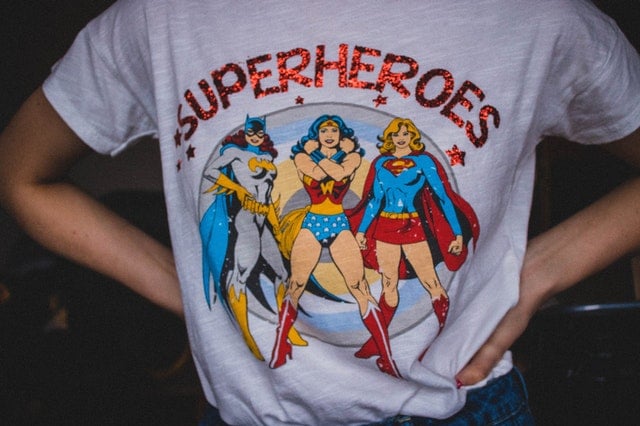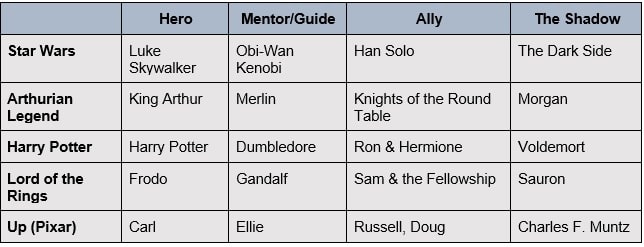
The Hero’s Journey: Storytelling in B2B
THE HERO’S JOURNEY: STORYTELLING IN B2B
Humans are storytellers from way back in the caveman days. We crave stories, stories drive us, and we immerse ourselves in stories.
Children’s book authors like Maurice Sendak and Roald Dahl created worlds that we embraced in our youth and never forgot. Writers like Stephen King and Toni Morrison built stories that shook us to our core. Even the greatest speeches like Martin Luther King Jr.’s “I Have a Dream” and Abraham Lincoln’s “Gettysburg Address” use powerful storytelling to motivate and even change us.
A truly remarkable story draws the reader in and makes them feel like they are not just riding along with the hero; they are that hero.
Believe it or not, you can use this same thinking in your content marketing.
But my marketing is Business to Business (B2B), you say? Great! Using great storytelling and the Hero’s Journey in your B2B content marketing can set you apart and make your brand an essential part of your business customer’s Hero’s Journey.

What is the Hero’s Journey?
The Hero’s Journey is a storytelling model that you can find in tales from all over the world and any time period. A mythology expert named Joseph Campbell laid it out in his book “The Hero With a Thousand Faces” in 1949. He broke down the Hero’s Journey into three distinct acts:
- The Separation or Departure
- Trials and Victories of Initiation
- The Return and Reintegration into Society
Let’s simplify this by looking at a familiar story that leaned heavily on Campbell’s Hero’s Journey: “Star Wars.”
At first, Luke refuses to go off to save Leia because he has obligations at home. But Imperial Stormtroopers take away his home and relations, freeing him up to go, though at great cost. Then, he undergoes a remarkable series of trials as he learns to harness the force, face his father, and defeat the Empire. By the end, he has made a new home for himself and established himself as a Jedi and a hero.
Another aspect of the Hero’s Journey storytelling paradigm is the use of archetypal characters. In other words, you’ll see very similar roles appearing in these stories. There are really eight, but these four form the backbone of the Hero’s Journey:
- Hero
- Mentor/Guide
- Ally
- The Shadow
Here are a few fun examples of these archetypes.

How Can the Hero’s Journey Work in Content Marketing?
In B2B marketing, you are trying to solve another business’s problem. Whatever you make or do, the only reason for another business to pay for what you offer is to solve that problem. Think about the Hero’s Journey. The hero has a problem and must go to great lengths to fix it.
Make your customers the hero of their own stories.
As you craft your marketing, from blogging to web copy and advertising, keep this idea in mind and structure your message around it.
Hero: Your customer. Yes, B2B still has customers; they’re just other businesses. Your customer has a problem or will soon have a problem that your product or service can fix. Remember, they may not even know they have a problem. Did Frodo know anything about the Rings of Power or Sauron before Gandalf clued him in? Nope. Speaking of Gandalf…
Mentor/Guide: Your brand! You understand the stakes and have answers. That doesn’t mean the customer won’t have to do some work or make some sacrifice, but you can help guide them to the right answers. Your marketing needs to convey this message!
Allies: Your products and services. They can, and will, help your customer reach the end of the journey with a remarkable victory.
Shadow: Don’t forget the conflict! This is the customer’s pain point. What is the problem they face, and what will happen if they do not address it? Heroes need to overcome struggles to reach their goals. What are your clients’ struggles? How can your brand guide them through that to a big win?
Be Creative, But Not Too Creative
You want your marketing to create a story, but it needs to ring true and represent your clients in real life.
Think about your customer and the things they are going through on their journey. Break it down as much as you can so you can tell each piece of the story individually. Your marketing should educate and, when possible, entertain.
Another reason to keep your creativity in check is to retain integrity. You also don’t want to make outlandish promises that you can’t back up. Think creative non-fiction rather than fiction.
Remember the Differences Between B2C and B2B
The target audience for B2B marketing may be smaller and more niche, depending on the industry, than for a typical B2C (Business-to-Consumer) campaign. That’s okay. In fact, that’s great. It makes it even easier to zero in on your hero and tell that story that will strike home.
B2C tends to be based on emotionally driven decisions, while B2B strives for rational decisions. Improving the bottom line is always a factor. However, emotion is still essential. After all, your B2B client’s decision-maker is still a person. That emotion just needs to be backed up with a solid rationale.
You also want to keep in mind your own brand’s goals. B2C is more about brand awareness. B2B is lead-acquisition-driven. You want new clients or to convince your current clients to spend more. The Hero’s Journey can be a great way to introduce a new product or service. It’s the tool that your brand, as the mentor, can provide to help the hero defeat the shadow.

It’s all About Goals
Remember, in any good Hero’s Journey, the hero and the mentor have the same goal. If the hero is successful in the quest, the mentor is also successful. And, while the relationship is symbiotic, neither can reach the goal without the other. It is the mentor’s responsibility to convince the hero to trust them and accept the offered help.
By thinking about the Hero’s Journey in your content marketing, you can help your clients envision the successful conquering of their pain points and convince them that you have what it takes to help them reach that goal. As an added bonus, it will make your content more interesting and enjoyable.
Related Content
- 0 Comment
Subscribe to Newsletter
- How Can SharePoint Be Used To Organize and Disseminate SOPs?
- Planning the Perfect Genealogy Research Trip: A Step-by-Step Guide
- From Silly to Awesome: How Words Change Meaning Over Time
- The Psychology of Font Choice: How Typography Impacts Content Engagement
- How to Distribute SOPs for Maximum Usability



